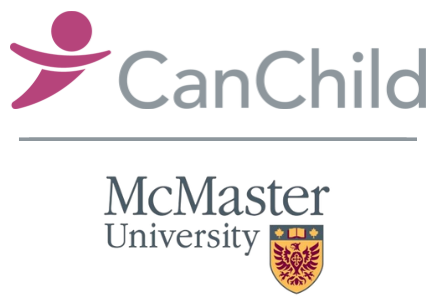What is DCD?
Children with Developmental Coordination Disorder (DCD) have difficulty performing everyday motor tasks such as printing or playing on the playground with other children. Their motor skill level is below that of typically developing children even though they have at least average intellectual ability and no other diagnosable neurological disorder (American Psychiatric Association, 2000). These children take longer to learn and to perform tasks, plus they experience many frustrations as they attempt ordinary activities such as dressing and feeding (Polatajko & Cantin, 2006). More than 192,000 Ontario children experience significant difficulties with motor skill coordination, interfering with academic achievement and everyday activities. DCD is a chronic health condition, comorbid with other childhood disorders (e.g., attention deficit/hyperactivity disorder; speech/language impairment) that can often lead to long-term negative social-emotional and physical/health consequences (Wilson, 2005).
What is a shared care model for children with DCD?
This shared care model introduced occupational therapists (OT) into primary care offices to assist with the identification, diagnosis and management of DCD.
The project aimed to improve access to care for children with DCD and their families through:
- the education of physicians who, in turn, educated parents of children with DCD;
- collaboration between primary care physicians and rehabilitation professionals.
Why did we do this study?
While 18% of children in primary care practices have developmental conditions, many go unrecognized. DCD is one of these conditions. It is highly prevalent (5-6% of school-aged children) yet it is poorly understood or acknowledged by most physicians ( Hamilton, 2002). Primary care physicians would benefit from education about DCD. The earlier that identification of DCD can take place for a child, the sooner interventions can begin, diminishing the negative secondary consequences of this disorder.
Rehabilitation professionals such as occupational therapists have specialized knowledge about developmental difficulties and can contribute to the identification and diagnosis of coordination disorders in children.
Who participated in this study?
One hundred and forty-seven primary care physicians in the Ottawa area joined this project. These physicians referred 125 children to the study: 116 of these children participated and were assessed by an OT.
What was done?
- Multimedia evidence-based resources about DCD were developed for educating primary care physicians and families.
- Working with opinion leaders from the medical community, educational workshops and resource materials were provided to physicians and to over 400 other professionals who provide services to children.
- State-of-the-art knowledge translation techniques were used to provide individualized, interactive sessions for physicians from single or group practices. Using Rogers ‘ Diffusion of Innovations model, the knowledge selected for sharing was relevant, valued, accessible, and rapidly applied by physicians. Immediate feedback and mechanisms for continued application were built into the model.
- OTs reviewed “at risk” patients with the primary care physician and taught screening techniques.
- 125 children were screened and referred by physicians for individualized OT assessment.
- Following each OT assessment, consultative feedback sessions were jointly provided by the physician and the OT to the families of the children.
- Families were provided with evidence based resources to share with important ‘others’ in their child’s life, e.g. teachers, coaches, family members.
- Thirty children who were suspected of having other comorbid conditions were referred on for an inter-disciplinary assessment at the Children’s Hospital of Eastern Ontario.
What was found?
- A survey of physicians’ knowledge conducted prior to the study revealed that 91% of physicians did not know what DCD was and only 0.5% were able to diagnose it.
- After the study, educated physicians were 89.7% accurate in identifying children who had motor problems (104 of the 116 children referred). Eighty-seven children were subsequently diagnosed with DCD.
- The shared care model was reported to increase both family and physician satisfaction.
- OTs working in primary care settings with physicians enabled families to receive appropriate education and resources.
- The model provided access to the right health professional at the right time.


What do the findings mean?
This study had two purposes: 1) to educate primary care physicians about a common developmental condition and, through them, to educate families; and, 2) to introduce rehabilitation professionals into the primary care setting to assist with the identification, assessment and management of children with DCD.
Our findings indicate that:
- Ottawa-based physicians know more today about how to identify motor coordination problems than they did previously.
- A n office-based partnership between OTs and physicians was effective in improving the quality of care for children with motor difficulties.
- The shared care model tested was cost-effective and beneficial to children and their families, service providers and the health care system in decreasing wait times and in encouraging self-management by families.
What is next?
- The shared care model introduced in this study should be tested with other rehabilitation professionals and other developmental health conditions where primary care physicians and families would benefit from being educated and empowered.
- Rehabilitation involvement in primary care settings should be considered in the new Local Health Integration Networks as a model to decrease cost and improve outcomes for children and families.
For more information about this study contact:
Robin Gaines, PhD, CCC-SLP, SLP (C), CASLPO gaines@cheo.on.ca
Cheryl Missiuna, PhD, OTReg(Ont) missiuna@mcmaster.ca
Click here for list of references
American Psychiatric Association. (2000). Diagnostic and statistical manual of mental disorders (4th ed. text revision). Washington, DC : Author.
Hamilton, S.S. (2002). Evaluation of clumsiness in children. American Family Physician, 66 (8), 1435-40, 1379.
Polatajko, H.J., & Cantin, N. (2006). Developmental coordination disorder (dyspraxia): An overview of the state of the art. Seminars in Pediatric Neurology, 12 (4), 250-258.
Wilson, P.H. (2005). Practitioner review: Approaches to assessment and treatment of children with DCD: An evaluative review. Journal of Child Psychology and Psychiatry, and Allied Disciplines, 46 (8), 806-823.
